
Artificial Intelligence (AI) has been a hot topic at digital marketing conferences this year, and Social Media Marketing World 2017 was no exception. Talking about the future of AI can be mind blowing, especially when experts estimate that computers will rival (or even surpass) human intelligence in as little as 16 years. What shocked me more than these predictions was that this technology isn’t only applicable in the far-off future; there are actually practical ways to apply it to business today. Christopher Penn, VP of Marketing Technology at SHIFT Communications, was able to deliver some informative answers to the biggest questions about AI; where it’s going and how businesses should be taking advantage of it:
How do I know if my business could benefit from AI?
- If you or your employees do the same task three or more times a day, AI could potentially solve it, because Penn predicts that if you do it with a template today, a machine does it without you tomorrow.
How can I implement AI for my business today?
- You can get 1,000 machine-generated blog posts for as low as $250. Compared to the time it takes an employee to write one, there are a lot of money-saving opportunities for your business when using natural language generation software.
- If you’re not ready to invest yet, there’s a free AI tool you can try right now. Anyone can retrieve immediate answers to marketing questions like, “How much does my competitor spend on PPC?” and “What keywords are they buying?” using GrowthBot, a machine-learning chatbot available now on Facebook Messenger and Slack. It doesn’t get much easier than that.
“Become the guy who helps the machines learn what great writing is.”
Is my job going to be replaced by a robot? How can I avoid this?
- The harsh truth is, as AI grows, we will need fewer humans, especially at entry level. So business professionals should start developing multidisciplinary skills and think about learning a programming language like R or Python.
- It will be a few more years before natural language processing starts to make content creators obsolete. To have a marketing career in an AI world, become outcome focused and let the machines do the heavy lifting. Become the guy who helps the machines learn what great writing is.
How can I convince my company and its culture that AI is important?
- “Scare them,” says Penn. Use competitors as examples to show how your company will either be leagues ahead or left behind if it doesn’t keep up.
You know the triangle where you have fast, cheap and good, but you only get to pick two? AI is going to change that. The reality is that computers are faster, cheaper and smarter than humans, so we should start finding ways to work with AI now. If you don’t, your competitors will.
I spent two days at the Transition Percolate marketing conference in New York City, and one of the most insightful panels was titled, How to Build an Inspired Customer Community. Nikki Rappaport, director of brand and marketing at Cava Grill, has helped grow a local restaurant into a national chain with an engaged social community. Her tactics may be easier to execute within a small organization, but that’s no excuse. Here’s what we learned:
Be nimble. When Nikki started at Cava Grill, the social photography was less than stellar. She went beyond styling better food photos and actually changed the way the restaurants were presenting food. By making a few small tweaks in how the kitchen added garnish and sauces, she was able to inspire the brand’s advocates to post more pictures on social.
Follow-through is key. Cava Grill keeps track of each user asking for new restaurant locations, then follows up with them on social when they launch in the requested city. They’ve done the same with specific product requests—tagging vegetarians in social posts announcing new meat-free menu items.
These are just a few of the simple concepts presented at Transition Percolate that have a huge impact, which big brands should be executing. Changing an organization’s process is not an easy task, but if you’re nimble and you follow through, you can build an inspired customer community.
#Transition2016
It's time for the @WaPoExpress Best Of 2016 list! We hope you'll vote: https://t.co/KWqgs74ZWV #BestQuickLunch pic.twitter.com/UYsKnfCFrU
— Cava Grill (@CavaGrill) September 12, 2016
Instagram announced on its blog that it’s adding “Stories” as a new format that will be rolling out in the next few weeks. Sound familiar? That’s because the functionality is nearly identical to Snapchat’s “Stories.” The content disappears within 24 hours, allowing users to share unedited moments throughout the day without worrying about over posting. Plus, there are no likes or public comments on Stories, so users can relax, have fun and get creative with text and drawing tools. What does this savage play by Instagram mean for brands?
The Good:
- Lower content expectations. Brands that may not have a steady stream of real-time content for Snapchat now have an easier way to test the “Stories” format without the expectation of keeping a separate account active.
- Less investment. Brands don’t have to spend time and money growing their following on Snapchat if they can leverage their existing audience on Instagram. This helps level the playing field for smaller brands.
The Bad:
- Not free for long. Instagram is owned by Facebook, which means it’s only a matter of time before it becomes a “pay to play” channel, while Snapchat still allows brands to earn high organic reach and doesn’t use an algorithm to filter users’ feeds.
- No way to measure success. Instagram’s blog post doesn’t mention any measurement tools for brands. Sure, brands can tap the new tool, but how can they analyze and optimize their content? Brands need data in order to justify new investments.
The Ugly:
- Uncool, Insta. Didn’t their mothers ever teach them not to steal other people’s ideas? As an innovative, leading brand in the social space, could Instagram really not put a unique spin on the functionality of Stories?
Only time will tell whether Instagram or Snapchat will win over users with Stories, but the format is here to stay because users want to share both their highlight reel as well as their everyday moments. They want the social recognition that comes from likes and the carefree fun of disappearing content. With that in mind, when testing Stories, brands should focus on transparency and creativity to appeal to this audience.
Instagram’s new rainbow sherbet vomit is currently causing a rift in the design community. Some people love it, while others absolutely abhor it. Personally, I kind of like it…kind of.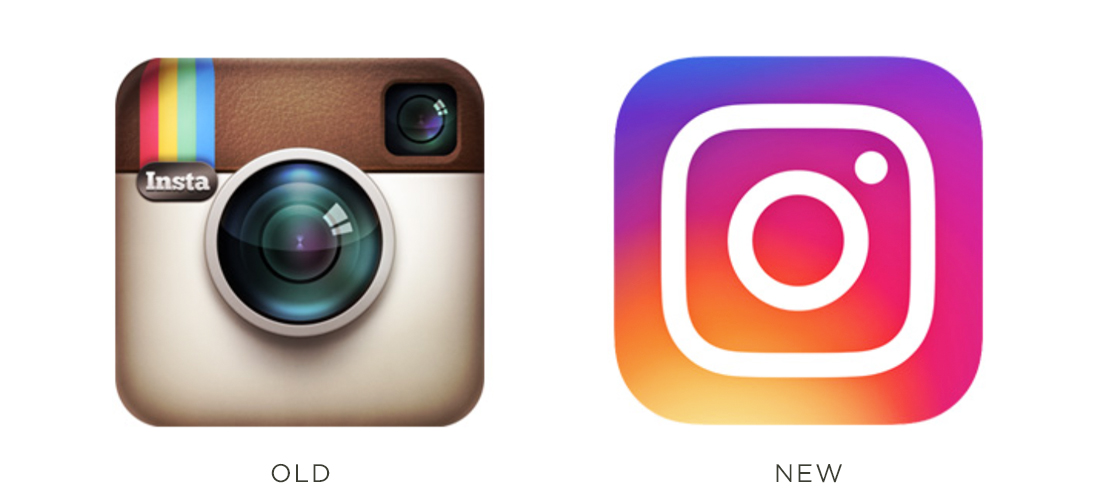
When Apple first launched iPhone, much of its interface followed skeuomorphic design principles. Skeuomorphic design pulls ornamental elements from real-life objects and brings them into the digital realm even though those elements are no longer necessary. For example, the top of Apple’s iCal App interface used to look like leather with stitching; the Notes App used to look like a real notepad with paper torn at the top; Apple’s Newsstand used to look like a miniature wooden book shelf…you get the idea.
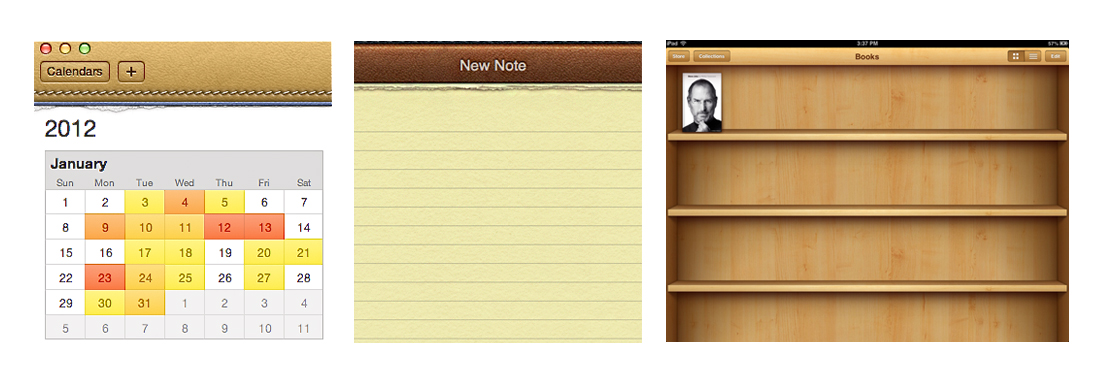
The old Instagram logo was still stuck in this dated, literal representation of an object realm.
The new logo strips away all the unnecessary decorative elements and gives us the bare minimum of visual cues necessary for our brains to decipher that the logo is a representation of a camera. In my opinion, when it comes to app design, for the most part, cleaner and simpler equals better ease of usability.
Color doesn’t always equal tacky, and black doesn’t always equal elegant.
As for that rainbow gradient of colors in the background of the logo? The part of me that jumps for joy when seeing a rainbow—or even better, a double rainbow—loves it. I’ve never been one to shy away from color in anything in my life; from my wardrobe to design to my apartment decor.
Color doesn’t always equal tacky, and black doesn’t always equal elegant. Color, when used appropriately, can elevate a design to a whole new level, so don’t be afraid of it!
But another part of me worries that these colorful gradients are just a fleeting trend and five to 10 years from now, we’ll all be saying, “Oh, yeah, that was definitely made in 2016.”
Usually, good design doesn’t rely on short-lived trends. Logos like Coca-Cola, GE and IBM have stood the test of time because each were designed using unwavering core design principles and with longevity in mind. But then again, Instagram exists in a fleeting, temporary digital realm, so maybe they’re allowed to design something that won’t make it to the year 2116.
Overall, I’d say it’s an upgrade and a step in the right direction, but this new logo might be so simplified and trend-based that Instagram has given its new brand a very short shelf life.
We (GSD&M’s Social Media Department) sat on the edge of our seats with baited breath as each announcement during the Facebook f8 Developers Conference rolled out. With racing hearts and sweaty palms—no we’re not exaggerating; yes, we love social media that much—we waited as the last announcement was unveiled. To no avail, we were left wondering how f8 failed to mention the product improvements we begged for on our Christmas lists to Zuckerberg. We even tried to call, but Santa must have changed his number.
In all seriousness, to create the most engaging content on behalf of our clients and to continuously evolve our practice, we have some hot-punch list items for Facebook:
- Full GIF integration. If a picture is worth 1,000 words and the average GIF is 60 frames, a GIF is worth 60,000 words. GIFs are an engaging and entertaining intersection between photos and video, and the rest of the internet communicates in them, so we want to on Facebook as well.
- More insights around engaged organic users—besides audience prioritization. All of our fans are special in their own way, and we want to create content tailored to the interests and needs of our most engaged fan segments, so let us see more about them.
- Facebook customer support for business pages via Messenger. 1-800-FLOWERS, CNN, Hyatt, KLM, but no Facebook? There’s a severe need for better customer support of small business pages on Facebook and bots on Messenger is a prime opportunity to up Facebook’s own customer service game.
- Breakdown of post engagements by reaction type in Insights. There’s a big difference between LOVE and ANGER. Let us understand how our content is being received by audiences.
- Give us a date. When will Instagram algorithm change and how it will differ from Facebook’s? We’re dying to know—literally dying—our clients are dying to know and we want to be ready. Hint?
And personally, here are a couple ways I believe Facebook could get us to spend even more of our time—outside of work—staring at our phones:
- News Feed keyword filter, similar to Tweetdeck. Maybe this election cycle has just gotten to us, but our Facebook News Feeds should be full of what we want to see and void of things we don’t—even if we just need a brief break from an annoying topic. The Bachelor? Politics? #NationalCatDay? Wouldn’t it be nice if you could just mute them in your News Feed, even for just a couple of hours? Ahhh, relief.
- Algorithm off-switch, like Twitter. Because some of us actually DO want to see it all and not miss a thing from friends and brands we once chose to “like” or “add.” Shout out to Twitter for not forgetting about us when it joined the algorithm party.
So yes, f8 spiked our curiosity and had us at the edge of our seats waiting for what’s next in the world of social media. But like a kid who got socks in his stocking, we were kind of unimpressed with the lack of “shock” that Christmas brought this year. So come on Zuckerberg, turn off your algorithm switch and hear what we’re saying.
I know. It’s another article that appears to allude to the demise of Google+. You can find more than a few of these scattered about the Internet from the past few years. Many are asking why the seemingly plagued social network still exists. The big news this week? Among all the other famous couples calling it quits out there: Google+ and YouTube.


However, what appears negative at first glance might actually be a positive. As Google’s Bradley Horowitz states, “We think changes like these will lead to a more focused, more useful, more engaging Google+.” It’s clear that Google still hopes to have a relevant social network. And separating its services will allow those who enjoy the social aspect to remain focused on what they like about its community features.
Now, don’t run out and cancel your Google+ profile right away. It’s going to be a process of separation that will take awhile. However, the future holds a Google account that won’t be searchable or followable. This has promise for those users who may not want to make their every move in the Google framework public.
By Kelsey Karst, Studio Art and Design Intern
As the Cannes Lions Festival kicks off this week, marketers and agencies across the globe are anxiously awaiting to discover who will take home the 2015 awards across the Health, Lions and Innovation tracks. “The Cannes Lions will recognize and award the year’s most exciting creative ideas across 20 categories, covering everything from traditional print and film communications to technology and product design,” according to canneslions.com. Ideas and brands will be recognized and celebrated, in addition to introducing new creative ideas for the upcoming year.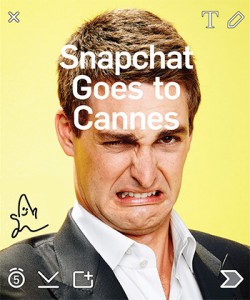 This year, the spotlight is on Evan Spiegel, CEO of Snapchat. Today at Cannes, Spiegel introduced what could become the most efficient, influential and useful media platform. Spiegel took the main stage to discuss his plan to open his company up to marketers, which is predicted by many to take the advertising world by storm. Discover partner and Cosmopolitan Editor in Chief Joanna Coles interviewed Spiegel onstage earlier this afternoon about creativity, millennials and what he thinks will excite this generation next.
This year, the spotlight is on Evan Spiegel, CEO of Snapchat. Today at Cannes, Spiegel introduced what could become the most efficient, influential and useful media platform. Spiegel took the main stage to discuss his plan to open his company up to marketers, which is predicted by many to take the advertising world by storm. Discover partner and Cosmopolitan Editor in Chief Joanna Coles interviewed Spiegel onstage earlier this afternoon about creativity, millennials and what he thinks will excite this generation next.
Spiegel went into detail on the creation of Snapchat: four years ago in a college dorm room at Stanford with a few of his fraternity brothers. He goes on to discuss how “Snapchat is trying to incorporate relevant advertising without being creepily targeted in the messaging.” He touches on the importance of retaining the anonymity and privacy of users while still providing the tools advertisers need to be effective. Spiegel discussed that brands now have the ability to sponsor videos, location-based filters that viewers use when they are within a certain geographic area. He also highlighted the newest advertiser taking part, which is Procter and Gamble, who sponsored Snapchat’s Father’s Day story live-stream. A lot of today’s crowd was just getting introduced to Snapchat, but this talk left both Spiegel and the audience confident in the progression of this app and what it will do for the advertising world, according to Garett Sloane of Adweek.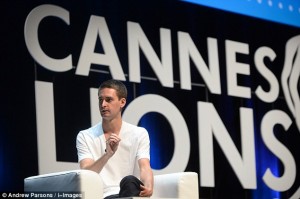 What is especially worth noting is that, even just a couple of years ago, Snapchat would never have been deemed credible enough to be featured at Cannes. The brand’s evolution is extraordinary. What started as a peer-to-peer-image-sending app soon grew to incorporate video, location and visual graphics. Snapchat then went on to tackle texting by adding a messaging platform. Most recently, Snapchat added the “discover” button to keep its users up to date on news and current events through select media partners like Comedy Central, ESPN, Daily Mail, Cosmopolitan and VICE. In just four short years, Snapchat essentially has it all. It has the ability to take market share away from WhatsApp, Facebook, Instagram and even Twitter—which is what makes it so appealing to advertisers. It is not a once-a-day use application, it is a 20-per-day use application; this user frequency is advertising gold.
What is especially worth noting is that, even just a couple of years ago, Snapchat would never have been deemed credible enough to be featured at Cannes. The brand’s evolution is extraordinary. What started as a peer-to-peer-image-sending app soon grew to incorporate video, location and visual graphics. Snapchat then went on to tackle texting by adding a messaging platform. Most recently, Snapchat added the “discover” button to keep its users up to date on news and current events through select media partners like Comedy Central, ESPN, Daily Mail, Cosmopolitan and VICE. In just four short years, Snapchat essentially has it all. It has the ability to take market share away from WhatsApp, Facebook, Instagram and even Twitter—which is what makes it so appealing to advertisers. It is not a once-a-day use application, it is a 20-per-day use application; this user frequency is advertising gold.
Brands can replicate this style of user behavior to better engage with the Snapchat community. Brands could essentially take more risks in their advertisements if they appeared on Snapchat. They could create humorous ads that could be viewed for that allotted time, and it would disappear. I also think the quick viewing of an advertisement would make it more appealing to users because it’s an interactive video that would only take 10 seconds to watch, rather than interrupting you for 30 seconds to a minute, like YouTube video ads. Because of poor planning, some advertisements come up at an inconvenient time and are too lengthy, causing viewers to be agitated rather than intrigued. If marketers played around with this idea by making the message visually appealing, humorous and/or playful for this younger audience, I think this could be a very successful outlet. Whether it’s a quick snap of a delicious Chipotle meal, or a five-second video of someone trying to shove a burrito down in one bite, it enables viewers to keep the brand top of mind.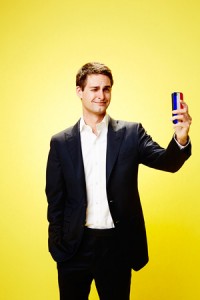 Recently, Snapchat showed its powerful impact during ABC’s broadcast of the American Music Awards. Three million viewers tuned in, while Snapchat Live Story broadcasted snippets of the event and drew in 11.5 million viewers, according to the Adweek article, “How Snapchat’s CEO Plans to Conquer the Advertising World. His first time at Cannes, Evan Spiegel is already star of the show.” As Snapchat continues to increase its user base and expand content options, advertising is starting to become part of this platform, as introduced today by Spiegel himself. Both Spiegel and Cannes Festival attendees seem excited to see what direction Snapchat could steer advertising and ideas, if anywhere at all.
Recently, Snapchat showed its powerful impact during ABC’s broadcast of the American Music Awards. Three million viewers tuned in, while Snapchat Live Story broadcasted snippets of the event and drew in 11.5 million viewers, according to the Adweek article, “How Snapchat’s CEO Plans to Conquer the Advertising World. His first time at Cannes, Evan Spiegel is already star of the show.” As Snapchat continues to increase its user base and expand content options, advertising is starting to become part of this platform, as introduced today by Spiegel himself. Both Spiegel and Cannes Festival attendees seem excited to see what direction Snapchat could steer advertising and ideas, if anywhere at all.
Written by Zinny Bonner
Apple announced its newest feat at taking over the world last week. Okay, not really the world, but might as well be. Improvements to Apple Pay, News Apps and their latest venture, Apple Music, proves that Apple continues to be a force to be reckoned with, not only with their ability to create a new phone every five seconds, but in fact, the leader in creating technology that influences the way we listen to music and ultimately, the way we live our lives.
Apple Music has finally jumped on the streaming train but not without adding their own touch. This new feature available to all Apple products (Android and PC later in the year) will have the entire iTunes library, the music added to your personal library, a radio with live DJs and a social media factor that connects artists and fans.
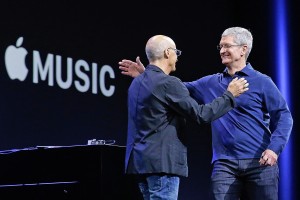
When iTunes debuted in 2003, it changed the way we listened to music and has now become so embedded in our everyday lives that we forget how much of a game changer it was. Now in 2015, iTunes is old news, and Apple Music is Apple’s attempt at reminding people they are still in the business of providing music. One component of Apple Music is, of course, music. This will give you access to your personal library of music you’ve downloaded and also access to the entire iTunes library for streaming songs on demand. Also, Apple “experts” handpick songs and playlists they think you might like based on what you listen to regularly. Jack Epsteen, SVP/director of production at GSD&M and self-proclaimed “Apple geek,” noted that although he’s excited to see how the music library works, he’s not sure that this latest venture by Apple will tear people away from their routine streaming program. “Unless Apple can do what Tidal and Spotify haven’t been able to do—find a real, sustainable streaming model that also pays the curators—I don’t think this will change how musicians do business,” he said.
Another piece of this project is Beats 1, “The world’s local station.” With DJs from Los Angeles, New York and London, Apple is trying to get people to appreciate a shared listening experience. It will be interesting to see how many people will tune into the 24/7 radio stations.
Lastly, there’s Connect. Connect is basically Apple’s own social media and “a place where fans can engage with their favorite artists.” Essentially the feature allows for artists to post directly to the platform, anything from unreleased music to rehearsals in the studio. This is where Apple has taken the risk, as it’s like nothing they’ve done before. As a social media lover myself, I’m curious to know what is going to make people and artists stray away from the traditional tweet or Facebook post that could serve the same purpose.
Jacqueline Coffey, associate media director at GSD&M, said that one somewhat overlooked aspect of Apple Music is that it does not offer on-demand music for free with advertising, and Spotify, YouTube and Pandora do. Although their option of $14.99 for up to six people on a plan is a better deal than Spotify’s $9.99 per person, Coffey said Apple will be playing catch-up and “coming from a Spotify user whose day-to-day life is rooted in digital media, the market is cluttered, and it will take a lot more than the Apple name for users to make the switch.”
On the other hand, David Rockwood, VP/community relations at GSD&M, thinks the goal of Apple introducing this new feature is not to necessarily switch from one streaming program to another, but instead convert all non-Apple device users. “Since there are over 100 million iPhones out there, downloading their new software update with one easy-to-use music service will help them sell even more phones, which is probably their bigger goal, to sell more hardware,” said Rockwood. According to Hardware Top 100, Apple is #20, with HP, Samsung and Foxconn in the top three positions.
So Apple Music could be the next big thing or just Apple’s failed attempt at remaining relevant and shiny in the music business. We’ll find out June 30 when it launches, and I can’t wait to see what it’s all about.
By Zinny Bonner, Communication Intern
GSD&M’s first ITMAD event concluded yesterday after a series of sessions focused on innovation, entrepreneurial thinking and experience design with presenters from GSD&M and guest speakers from Southwest Airlines and Silvercar. As part of the event, we were also able to tour the U.S. Air Force’s latest experiential tour.

Starting off with a bang, or rather a jaw-dropping hologram demo, Heather Hvidsten, senior director of product management and product innovation at Southwest Airlines, presented Honk If You Are Sick of Talking About Innovation! With a father who worked at NASA and mother who is an artist, Heather was raised to think outside of the box. She looks at innovation with the mindset that every single person is perfect exactly the way they are. She encourages, “If you are passionate and not in a group that feels the same way, it’s not you, it’s the group. So change the group.” Innovation is about making something great ever better. To do this, Heather organizes rapid innovation workshops that encourage participants to open their minds and think differently. She puts crossfunctional teams together to accelerate the idea process. Most importantly, however, she engaged every aspect of Southwest Airlines’ team, from finance to creative, by emphasizing the many different roles involved in innovation. “The role of the supporter is just as important, if not more important, than the role of the idea creator,” she said.

The second session of the day, Capturing Moments & Building Stories: Instagram for Business, by Janice Suter, director of social media, and Caitlin McDaniel, senior social media manager, began with a display of how great ideas can come from a platform. With Instagram’s 64 million followers, brands everywhere are starting to notice the influence of the visually pleasing and culturally dominant platform. With Instagram, influencers offer something unique in shaping the story behind a brand —the ability to tell a brand’s story from a personal and genuine perspective. Brands can use these influencers along with unique content their own photo streams to engage audiences and take them places they’ve never been.
Having just opening its ninth location, Silvercar’s Russ Lemmer, co-founder and VP marketing, and Allen Darnell, CTO, presented Silvercar: Better Experience, Better Brand. Car rental is an industry notorious for lack of customer satisfaction and consistency. Silvercar recognized the need for a consistent, mobile-first and modern solution to car rental. To create a meaningful solution, Silvercar focused on taking advantage of all of the amazing tools and current technology available to maximize user experience. Russ Lemmer reminded the audience that one of the most powerful tools for the future of marketing is something we all have: the smartphone. Recognizing the value of smartphone technology, Silvercar is a 100% mobile service. By doing this, Silvercar cuts out most of what makes car rental a painful process in pursuit of their ultimate goal: a seamless product experience and maximum customer satisfaction. The less friction their customers have to endure, the more valuable they consider the Silvercar product.

Rye Clifton, the agency’s director of experience design, discussed Connect the Dots, La La La La: Dissecting the Components of a Startup & Reassembling Them for Your Clients. In this session, Rye pinpointed a few agency clients and other brands that are really paving the way for other companies and across different industries. Rye also chatted about the pros of thinking like a startup and noted it’s best to start small then add on to a brand experience, the big takeaway being the solution to a business problem is sometimes not an ad at all.
At the last session, Amanda Parker, senior media planner, gave an overview on some of the conversations at the recent Ad Age Digital Conference that sparked the original ITMAD idea. In Integrity & Insight: Conversations Sparked at Ad Age Digital, the main points established were everyone’s role in consumer experience management, why it’s crucial to have the right people in the room and how agencies provide platforms for data, tech and progress. When it comes to the consumer experience, a team must remember that everything leads back to consumers. They are what keeps a brand going; however, it is hard to control every aspect that affects the consumer experience, so teams must work together to keep the consumer in mind at every step.
Platforms are the new service that agencies bring to their clients, and the data they house and the innovation they allow are what move business and make good partners. Amanda Parker emphasized the importance of utilizing technology that has already been established, similar to Silvercar’s idea, in order to create a foundation for problem solving through calculated risks. We learned that innovation should be thought of as “70-20-10”: 70% are the things you know for sure work for your business, 20% are tested strategies that are still evolving and the final 10% is the room you have left to take a leap of faith in true innovation. In closing, Amanda said, “There was a lot to be gleaned from the best and the brightest in our industry, but at the end of the day it was really affirmed that we’re in the same progressive track here at GSD&M.”
Our first ITMAD (Ideas that Make a Difference) event started yesterday leaving the audience eager to hear today’s four sessions. Across the two-day mini conference, the conversation focuses on a range of topics including innovation, entrepreneurial thinking, experience design, disruption and creativity with GSD&M presenters as well as guest speakers Heather Hvidsten from Southwest Airlines and Russ Lemmer from Silvercar.
With a packed room so early in the morning, GSD&M’s Director of Experience Design Derek Dollahite kicked off ITMAD with Experience Design: No Best Practices When Designing for Happiness. Design invades our lives now more than ever, and Derek noted the power technology has in determining the future of design. “Experimental Design uses technology to emphasize user experience and create culturally relevant solutions” – his advice for incorporating experience design into your work? Takeaway: “ENKS” – Embrace Not Knowing Shit. Jonathan Hart, VP/Decision Sciences at the agency also wowed the attendees with his exploration of Everything You Ever Wanted to Know About Digital’s Place in the Origin and Development of the Universe, But Didn’t Know to Ask. In this, he walked through the evolution of digital in concert with the origin and organization of the universe, starting with the Big Bang and ending with positing that perhaps we are all just participants in a giant simulation of life as we know it. Understanding how the universe organizes itself gives us insight into the future of computational power as well, and a peek into a future in which we may cross the threshold of evolution with the introduction of conscious machines. In the words of visiting filmmaker Alex Johnson, “I didn’t know this was going to get spiritual!”
Jonathan Hart, VP/Decision Sciences at the agency also wowed the attendees with his exploration of Everything You Ever Wanted to Know About Digital’s Place in the Origin and Development of the Universe, But Didn’t Know to Ask. In this, he walked through the evolution of digital in concert with the origin and organization of the universe, starting with the Big Bang and ending with positing that perhaps we are all just participants in a giant simulation of life as we know it. Understanding how the universe organizes itself gives us insight into the future of computational power as well, and a peek into a future in which we may cross the threshold of evolution with the introduction of conscious machines. In the words of visiting filmmaker Alex Johnson, “I didn’t know this was going to get spiritual!”
Alex R. Johnson brought his film, Two Step as part of a discussion of nurturing ideas, creative collaboration and sources of inspiration for storytelling. Alex also discussed his move from Brooklyn to Austin, and how the creative culture of Austin helped move a project along to fruition. In addition to being filmed entirely in Austin, Two Step features a cast that includes guest appearances by local music artists Dale Watson and Jesse Dayton, The film was scored by a local musician, Andrew Kenny, who Alex had originally met doing commercial production and music videos in New York City. The film was a riveting thriller that kept the audience on edge. Let’s just say after watching you might think twice about using drive-up ATMs.
As the last session, Digital Producer Amanda Traversi and Account Manager Adrienne Strange presented “WTF? We Do This S**t?” Launching the Air Force Performance Lab. In this, they gave an in-depth look at the creative, production processes, technologies and partnerships involved in creating the latest U.S. Air Force experiential tour now crossing the country. As noted, “unlike most brands, you can’t try on or test the Air Force. In turn, our team sets out to create the most engaging and inspiring experience possible.” They proved that if there is a will, there is a way, especially working with a set of partners all focused on the success of the project and a deep understanding of the project goals. After exploring countless new technologies and options, they made the trailer a completely physical experience by providing visual, competitive, and informative games. The team also mentioned they looked beyond the experiential aspect of the project as well, by measuring and recording data, which is involved in reengaging potential recruits and serves as valuable data for the future.


